Antique Imperial Amethyst Purple Ripple Vase Vibrant Iridescent Carnival Glass
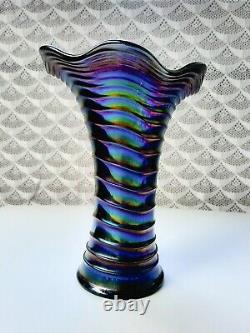
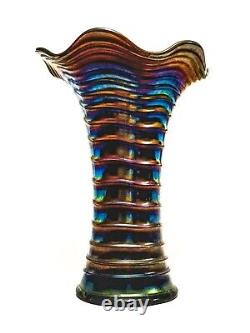
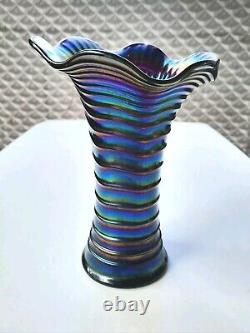
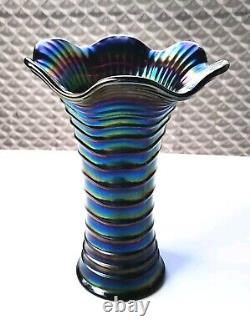
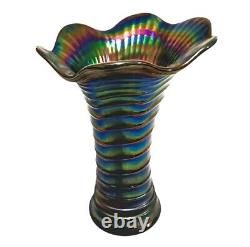

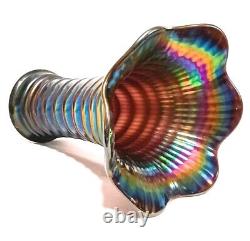
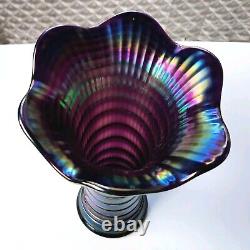
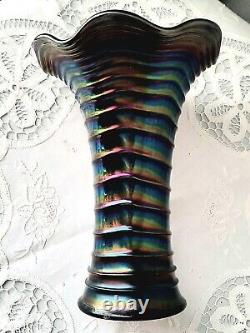
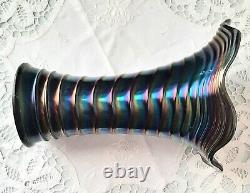
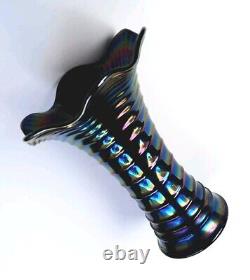
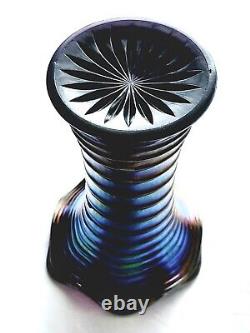
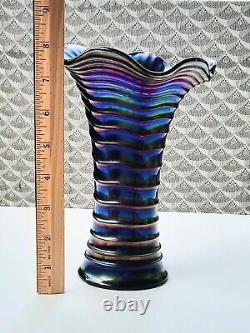
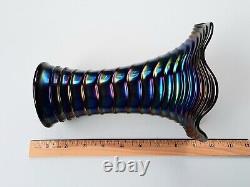
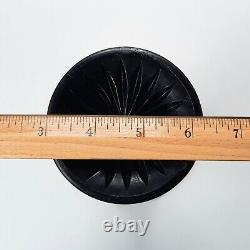
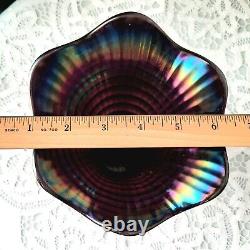

Antique Imperial Amethyst Purple Ripple Vase Vibrant Iridescent Carnival Glass. This listing is for a brilliantly iridescent, highly desirable, antique Carnival Glass vase made by the Imperial Glass Company. It is a vibrant eye-catching amethyst or purple Ripple style tabletop vase. Definitely a "stop-in-your-tracks" art nouveau decor element, it is attractive in any source of light. The pictures in the gallery show the vase in both bright daylight and in lower, warmer artificial light. Released first in 1910, Imperial made five different versions of their Ripple style carnival glass vase. They are classified by their base diameter rather than by height which is quite variable. This particular vase falls into their midsize category with characteristic base diameters of 3.75 in to 4.00 in.
This is the rarest of the base size classes according to David Doty (ddoty. The manufacturing process of the Ripple style vase involves both press molding and hand finishing the glass. The ruffled tops are hand pulled, while the narrowest specimens are swung to increase the length (height) of the vase.
The ripple pattern is a little more subtle in the swung versions. The last step in making carnival glass involves the application of metallic salts to the glass surface in order to achieve the characteristic iridescence. This vase has no chips or cracks but does show a few minor flaws that were produced during the glass manufacturing process. A few bubbles can be seen as well as a thread-like fiber inclusion. On first glance, the "thread" may be misinterpreted as a crack.
However, if you run your fingers over the inclusion both inside and out, the surfaces are completely smooth. Bubbles and inclusions are not uncommon in antique glass. There is some scuffing on the bottom of the base consistant with use over time. There is nothing subtle about this vase and it would look great in any Carnival Glass collection! It is recommended that you view all pictures in the gallery as they are included as part of the item description.
I try to the best of my ability to provide pictures that accurately depict the color(s) of items in my listings. However, as is typical with any monitor or mobile device screen, color reproduction may vary from the actual color of the items pictured. Differences in photographic light sources may also affect color reproduction as well. Please contact me if you have questions pertaining to the items listed.
